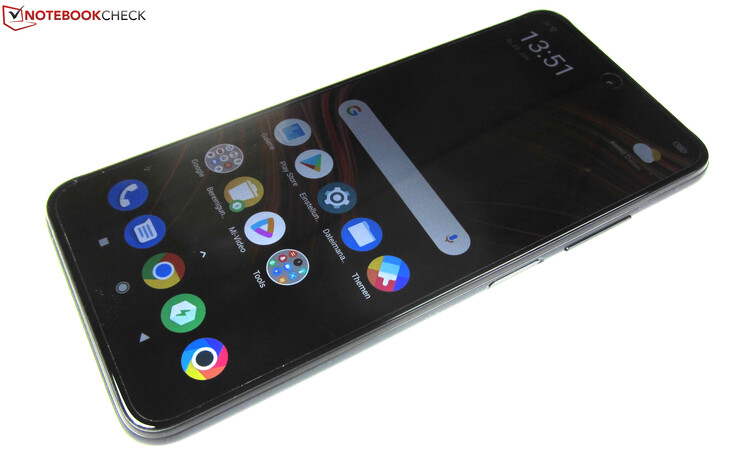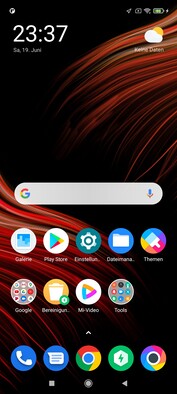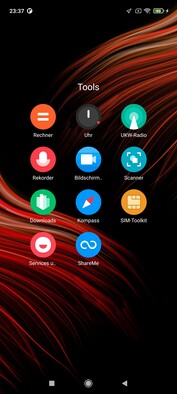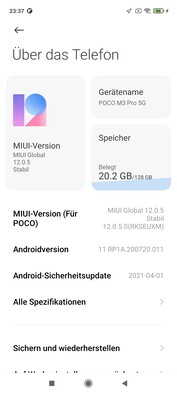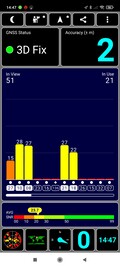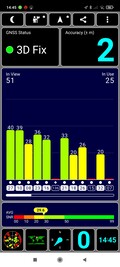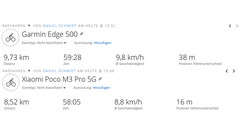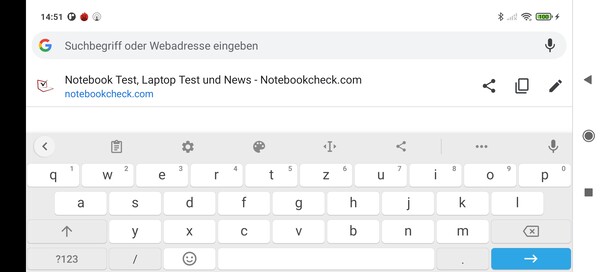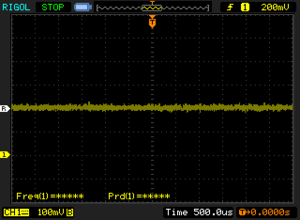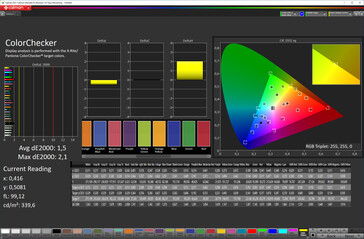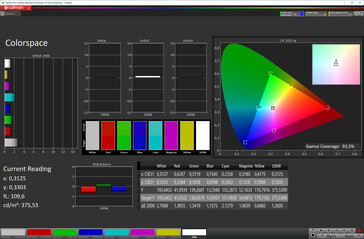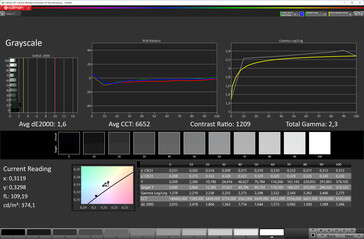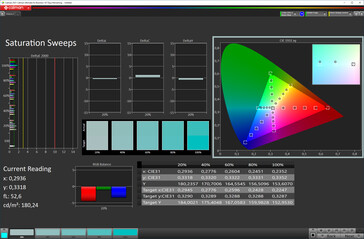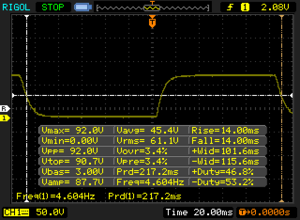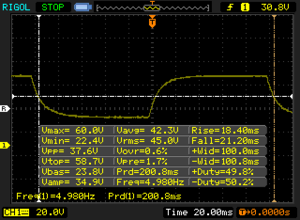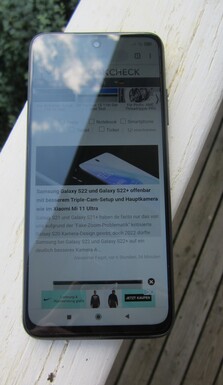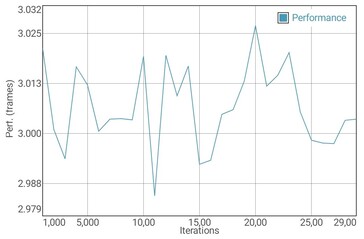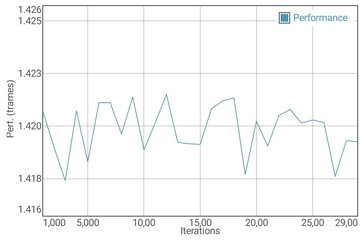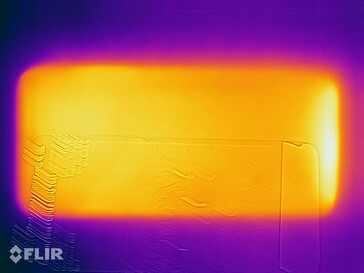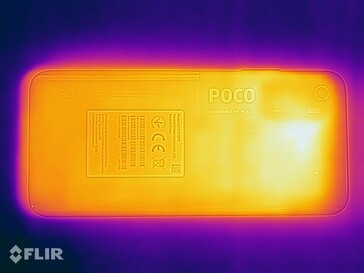Xiaomi Poco M3 Pro 5G smartphone review: 5G phone with strong features at a bargain price

Xiaomi sets the bar pretty high with its new budget smartphone: According to the manufacturer, the Poco M3 Pro 5G is intended to offer an unparalleled performance and entertainment experience in this price range. Our review will reveal whether the smartphone can live up to this ambitious claim. In any case, it's already clear that buyers will have to pay more for the Poco M3 Pro than for other Poco budget devices like the Poco M3, for example.
The base version of the Poco M3 Pro 5G comes with 4 GB of RAM and 64 GB of storage and has an MSRP of 200 Euros (~$237); 6/128 GB is offered by the top configuration, which has an MSRP of around 230 Euros (~$273). In return, however, you get a faster SoC than in the Poco M3 in the form of the MediaTek Dimensity 700. In addition, there are other new features like NFC, 5G connectivity, and a 90 Hz display. But this puts the Poco M3 Pro 5G very close to the Xiaomi Redmi Note 10 5G both in terms of price and features.
Possible contenders in comparison
Rating | Date | Model | Weight | Drive | Size | Resolution | Price |
|---|---|---|---|---|---|---|---|
| 80.5 % v7 (old) | 07 / 2021 | Xiaomi Poco M3 Pro 5G Dimensity 700, Mali-G57 MP2 | 190 g | 128 GB UFS 2.2 Flash | 6.50" | 2400x1080 | |
| 78.9 % v7 (old) | 06 / 2021 | Oppo A74 SD 662, Adreno 610 | 175 g | 128 GB UFS 2.1 Flash | 6.43" | 2400x1080 | |
| 80.2 % v7 (old) | 05 / 2021 | Realme 8 5G Dimensity 700, Mali-G57 MP2 | 185 g | 128 GB UFS 2.1 Flash | 6.50" | 2400x1080 | |
| 79.3 % v7 (old) | 03 / 2021 | Samsung Galaxy A32 5G Dimensity 720, Mali-G57 MP3 | 205 g | 64 GB UFS 2.1 Flash | 6.50" | 1600x720 | |
| 78 % v7 (old) | 01 / 2021 | Xiaomi Poco M3 SD 662, Adreno 610 | 198 g | 128 GB UFS 2.2 Flash | 6.53" | 2340x1080 | |
| 80.4 % v7 (old) | 06 / 2021 | Xiaomi Redmi Note 10 5G Dimensity 700, Mali-G57 MP2 | 190 g | 128 GB UFS 2.2 Flash | 6.50" | 2400x1080 |
Case - Glossy back cover in two-tone design
When it comes to budget smartphones, you shouldn't expect a stylish case design, elegant glass and metal surfaces, or an IP certification. This is what we said in our review of the Poco M3, and it applies almost perfectly to the Poco M3 Pro.
You also have to settle for a plastic case with Xiaomi's latest budget smartphone. With its two-tone design, however, the ergonomically curved back cover looks much better than the rubberized plastic back of the Poco M3. The Xiaomi Redmi Note 10 5G, which also combines a plastic cover with a colorful look, is very similar in terms of looks and feel. The downside of all this: The glossy back cover attracts fingerprints almost magically.
The prominent Poco logo on the back draws attention. It's located right next to the camera unit, which consists of a triple-lens setup in the Poco M3 Pro 5G (48 MP + 2 MP macro camera + 2 MP depth sensor). The fingerprint sensor is integrated into the power button on the right. The SIM/microSD slot is found on the left side of the case.
Xiaomi offers the Poco M3 Pro 5G in three colors: "Power Black" like our review sample, or alternatively, in "Cool Blue" or "Poco Yellow".
Connectivity - Up to 6 GB of RAM and 128 GB of storage
The Poco M3 Pro 5G is available in two storage variants. The base model comes with 4 GB of LPDDR4X RAM and 64 GB of UFS 2.2 storage and costs 200 Euros (~$237) in Xiaomi's store. If you opt for the top configuration with 6 GB of RAM and 128 GB of storage, it will cost you 230 Euros (~$273).
A 3.5 mm headphone jack, which also serves as an FM radio receiver when you use the headset cable, is included in the configuration as well. The USB-C slot operates at USB 2.0 speeds and is USB-OTG compatible.
Also on board are an IR blaster, a mono speaker and, like in the Xiaomi Redmi Note 10 5G, a hybrid SIM slot that can hold either two SIM cards or one SIM card and a microSD card. The latter can have a capacity of up to 512 GB and can also be formatted using the exFAT file system.
microSD card reader
Using our Toshiba Exceria Pro M501 reference card, the microSD slot achieves good sequential read and write speeds in the Cross Platform Disk Test. In contrast, the 13.7 MB/s rate for copying data is very slow.
| SD Card Reader - average JPG Copy Test (av. of 3 runs) | |
| Oppo A74 (Toshiba Exceria Pro M501) | |
| Xiaomi Poco M3 Pro 5G (Toshiba Exceria Pro M501) | |
| Xiaomi Redmi Note 10 5G (Toshiba Exceria Pro M501) | |
Cross Platform Disk Test (CPDT)
Software - Android 11 and MIUI 12 for the Poco M3 Pro 5G
The Poco M3 Pro 5G runs Android 11 with Xiaomi's MIUI 12 user interface on top. At the time of testing, the Android security patches are still at the level of April 1 and therefore not quite up to date. However, since Xiaomi provides its current smartphone models with patches about every three months, you can expect an update in July.
The Poco M3 Pro 5G supports DRM Widevine L1, making it possible to also stream Netflix content in HD quality, for example. In line with that, Netflix is one of the few third-party apps that come preinstalled on the smartphone. Others include Booking.com, Facebook, and eBay, among others, and they can all be uninstalled. If you don't delete anything, the available storage space in the 128 GB version is around 108 GB.
Communication and GNSS - Low radiation levels and GPS problems
The Poco M3 Pro 5G supports 5G connections on both SIM slots and achieves a good 5G frequency coverage with bands n1, n3, n7, n8, n20, n28, n38, n40, n41, n66, n77, and n78. There shouldn't be any connectivity problems in the EU region on 4G either (bands 1, 2, 3, 4, 5, 7, 8, 12, 17, 20, 28, 32, 38, 40, 41, and 66). The low radiation values of 0.54 W/kg (head SAR) and 0.895 W/kg (body SAR) are another plus point.
Just like with the Xiaomi Redmi Note 10 5G, you can also make mobile payments using NFC with the Poco M3 Pro 5G. In addition, the slightly newer Bluetooth 5.1 version is available (5.0 in the Redmi Note 10 5G). However, both smartphones hardly differ in terms of Wi-Fi speed, since they only use Wi-Fi 5 without MIMO antenna technology. Wi-Fi data transfers are correspondingly low, but they remain very stable during our tests.
| Networking | |
| iperf3 transmit AX12 | |
| Realme 8 5G | |
| Samsung Galaxy A32 5G | |
| Xiaomi Redmi Note 10 5G | |
| Xiaomi Poco M3 Pro 5G | |
| Xiaomi Poco M3 | |
| Oppo A74 | |
| iperf3 receive AX12 | |
| Samsung Galaxy A32 5G | |
| Realme 8 5G | |
| Xiaomi Poco M3 Pro 5G | |
| Xiaomi Redmi Note 10 5G | |
| Xiaomi Poco M3 | |
| Oppo A74 | |
The Poco M3 Pro 5G determines its position using GPS, Galileo, GLONASS, and BeiDou. In the test, this only takes a few seconds outdoors and is accurate to up to 2 meters. Positioning indoors is just as precise, but it takes a bit longer.
On a short bike ride, however, the smartphone struggles with its aggressive energy management, which repeatedly stops apps that are running in the background, such as the GPS tool, in an abrupt manner. The recorded route is correspondingly chaotic and disjointed as a result. This is a clear minus point for the Xiaomi phone.
Telephone and call quality
The Poco M3 Pro 5G has a hybrid SIM slot, which means it can hold either two SIM cards or one SIM card plus one microSD card. VoLTE and Wi-Fi calls are supported.
When held to the ear, speech is transmitted with good clarity. There are no problems in hands-free mode either, as long as you don't move too far away from the speaker. The Poco M3 Pro 5G also handles noise reduction quite well.
Cameras - Triple-camera setup without ultra wide-angle lens
The selfie camera has a resolution of 8 MP, and it's software is equipped with all kinds of filters and beautification features. In contrast to the normal Photo mode, Portrait mode automatically blurs the background. The selfie camera records videos at a maximum of 1080p and 30 frames per second. It delivers a solid image quality for video calls. Pictures quickly become noisy in low ambient light.
According to the specifications at least, the triple-camera setup uses the same trio of lenses as the Poco M3 and the Xiaomi Redmi Note 10 5G: A 48 MP main camera that takes 12 MP pictures using 4-to-1 pixel-binning; this is joined by a 2 MP macro camera, and a 2 MP depth sensor. From a marketing point of view, the term "triple camera" may be valid, but you don't actually get 3 cameras - the depth sensor is only used to achieve blurring, and the macro camera is relatively useless, because the digital zoom usually produces better results.
Nonetheless, the quality of the main camera is impressive. It produces decent photos in good lighting conditions, which score points with a high level of detail and a lot of dynamic range, but they still look a bit pale at times. Photos are still okay in low ambient light, but the sensor fails to capture enough details after a certain degree despite the available Night mode, which makes pictures look blurry. The main camera shoots videos of acceptable quality, but only in Full HD at 30 FPS.
Image comparison
Choose a scene and navigate within the first image. One click changes the position on touchscreens. One click on the zoomed-in image opens the original in a new window. The first image shows the scaled photograph of the test device.
Daylight - Scene 1Daylight - Scene 25x zoomLow-light photoUnder laboratory conditions and in simulated daylight (upper color chart), the Poco M3 Pro 5G comes pretty close to the reference colors and reproduces the test chart sharply. At 1 lux brightness (lower color chart), however, color deviations are very significant, and the results only manage to deliver a dark and washed-out image of the test chart.
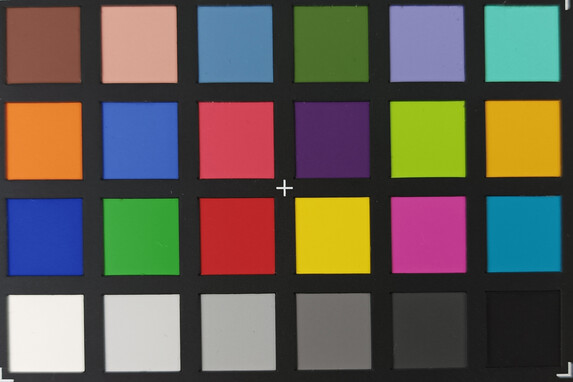

Accessories and warranty - 22.5-watt power adapter included in the box
The Poco M3 Pro 5G's package includes a 22.5-watt power adapter along with a suitable USB cable (Type-C to Type-A), a SIM tool, a transparent protective case, a quick-start guide, and warranty information.
Xiaomi provides a 12-month warranty on the smartphone. And of course, the retailer's warranty is also valid. Our FAQ article provides information in this regard.
Input devices and handling - Responsive thanks to MediaTek SoC
The MediaTek Dimensity 700 mid-range SoC turns the Poco M3 Pro 5G into a responsive smartphone that reacts quickly to input. The same is true for the fingerprint sensor, which is integrated into the power button, and the very reliable 2D face recognition.
Xiaomi uses Google's GBoard as the standard keyboard, but it can be replaced with any other keyboard from the Play Store if desired.
Display - 90 Hz panel with low brightness
The Poco M3 Pro 5G shows its Full HD+ resolution of 2400x1080 pixels on its 6.5-inch IPS panel, providing a high pixel density of 410 PPI.
The refresh rate toggles from 60 Hz to 90 Hz, which ensures a smoother image. If content can't be rendered at 90 Hz, the smartphone automatically switches to 60 Hz and saves battery power as a result. A firmware update should also enable a smooth transition between 90, 60, and 30 Hz in the future.
Nominally, the IPS panel has a maximum brightness of 500 cd/m², but it remains clearly below this mark with an average of 403.8 cd/m², and it's also the least bright device in our comparison field by far. The display of the nominally identical Xiaomi Redmi Note 10 5G is much brighter. We can get a maximum of 430 cd/m² from the display (APL50 measurement). Up to 426 cd/m² is possible when the brightness sensor is disabled. We measure 1.25 cd/m² in the lowest brightness level.
The IPS panel doesn't use PWM for brightness control, so even sensitive users can use the Poco M3 Pro 5G without concerns.
| |||||||||||||||||||||||||
Brightness Distribution: 87 %
Center on Battery: 427 cd/m²
Contrast: 2512:1 (Black: 0.17 cd/m²)
ΔE ColorChecker Calman: 1.5 | ∀{0.5-29.43 Ø4.77}
ΔE Greyscale Calman: 1.6 | ∀{0.09-98 Ø5}
93.5% sRGB (Calman 2D)
Gamma: 2.3
CCT: 6652 K
| Xiaomi Poco M3 Pro 5G IPS, 2400x1080, 6.5" | Oppo A74 AMOLED, 2400x1080, 6.4" | Realme 8 5G IPS, 2400x1080, 6.5" | Samsung Galaxy A32 5G TFT-LCD, 1600x720, 6.5" | Xiaomi Poco M3 IPS, 2340x1080, 6.5" | Xiaomi Redmi Note 10 5G IPS, 2400x1080, 6.5" | |
|---|---|---|---|---|---|---|
| Screen | -56% | -116% | -140% | -19% | -24% | |
| Brightness middle (cd/m²) | 427 | 606 42% | 576 35% | 543 27% | 465 9% | 550 29% |
| Brightness (cd/m²) | 404 | 606 50% | 550 36% | 512 27% | 428 6% | 515 27% |
| Brightness Distribution (%) | 87 | 98 13% | 91 5% | 85 -2% | 89 2% | 86 -1% |
| Black Level * (cd/m²) | 0.17 | 0.7 -312% | 0.63 -271% | 0.21 -24% | 0.32 -88% | |
| Contrast (:1) | 2512 | 823 -67% | 862 -66% | 2214 -12% | 1719 -32% | |
| Colorchecker dE 2000 * | 1.5 | 3.6 -140% | 3.58 -139% | 4.9 -227% | 1.7 -13% | 1.8 -20% |
| Colorchecker dE 2000 max. * | 2.1 | 6.2 -195% | 6.95 -231% | 8.6 -310% | 3.5 -67% | 3.1 -48% |
| Greyscale dE 2000 * | 1.6 | 3.3 -106% | 5.7 -256% | 6.3 -294% | 2.4 -50% | 2.5 -56% |
| Gamma | 2.3 96% | 2.31 95% | 2.141 103% | 2.23 99% | 2.16 102% | 2.28 96% |
| CCT | 6652 98% | 6704 97% | 7922 82% | 8120 80% | 6664 98% | 6326 103% |
* ... smaller is better
Screen Flickering / PWM (Pulse-Width Modulation)
| Screen flickering / PWM not detected | |||
In comparison: 53 % of all tested devices do not use PWM to dim the display. If PWM was detected, an average of 8083 (minimum: 5 - maximum: 343500) Hz was measured. | |||
We get the best image quality from the Xiaomi phone in the "Standard" color scheme (others options are the preset "Automatic" scheme, and the "Saturated" one). In this case, it achieves a contrast ratio of 2,512:1, which is excellent by IPS standards (however, it's slightly lower in the APL50 measurement due to the higher black level) and treats users to rich blacks as well as accurately reproduced colors and grayscales.
Display Response Times
| ↔ Response Time Black to White | ||
|---|---|---|
| 28 ms ... rise ↗ and fall ↘ combined | ↗ 14 ms rise | |
| ↘ 14 ms fall | ||
| The screen shows relatively slow response rates in our tests and may be too slow for gamers. In comparison, all tested devices range from 0.1 (minimum) to 240 (maximum) ms. » 70 % of all devices are better. This means that the measured response time is worse than the average of all tested devices (20.2 ms). | ||
| ↔ Response Time 50% Grey to 80% Grey | ||
| 39.6 ms ... rise ↗ and fall ↘ combined | ↗ 18.4 ms rise | |
| ↘ 21.2 ms fall | ||
| The screen shows slow response rates in our tests and will be unsatisfactory for gamers. In comparison, all tested devices range from 0.165 (minimum) to 636 (maximum) ms. » 60 % of all devices are better. This means that the measured response time is worse than the average of all tested devices (31.6 ms). | ||
The Poco M3 Pro 5G performs well outdoors, but it's best to use it in the shade due to its rather low brightness.
The Poco M3 Pro 5G's viewing-angle stability is not particularly high, at least when it comes to brightness - an effect that we had already noticed in the Poco M3. Content becomes noticeably darker as soon as you stop looking directly at the screen. In contrast, color reproduction remains neutral even from very flat viewing angles.
Performance - Fast everyday performance with the MediaTek Dimensity 700
The Poco M3 Pro 5G is powered by the MediaTek Dimensity 700, a mid-range octa-core SoC that is also found in the Xiaomi Redmi Note 10 5G. This is a big improvement over the Poco M3 and its sluggish Snapdragon 662, and it's not only noticeable in terms of benchmarks. The Poco M3 Pro 5G also runs much more smoothly and handles everyday tasks without noteworthy lags.
We were slowed down in other areas, however, because neither AnTuTu v8/v9 nor 3DMark run on the Poco M3 Pro 5G due to Xiaomi having blocked these in their firmware. Using tricks, though, we were at least able to run some 3DMark tests.
The realme 8 5G, which is also equipped with the MediaTek Dimensity 700, performs better than the Poco M3 Pro 5G in Geekbench and the system benchmarks, which is likely due to the different UIs and the larger RAM (8 GB). The Samsung Galaxy A32 5G with its MediaTek Dimensity 720 is a bit faster as well.
| AnTuTu v8 - Total Score (sort by value) | |
| Oppo A74 | |
| Realme 8 5G | |
| Samsung Galaxy A32 5G | |
| Xiaomi Poco M3 | |
| Xiaomi Redmi Note 10 5G | |
| Average MediaTek Dimensity 700 (249843 - 261067, n=3) | |
| AImark - Score v2.x (sort by value) | |
| Xiaomi Poco M3 Pro 5G | |
| Oppo A74 | |
| Realme 8 5G | |
| Samsung Galaxy A32 5G | |
| Xiaomi Poco M3 | |
| Xiaomi Redmi Note 10 5G | |
| Average MediaTek Dimensity 700 (4108 - 12011, n=5) | |
Almost the same SoC hierarchy presents itself in the browser benchmarks as in the synthetic tests. The Poco M3 Pro 5G, together with the Xiaomi Redmi Note 10 5G, is ahead of the Snapdragon 662 in the Poco M3 and in the Oppo A74, but it's able to outperform the Samsung Galaxy A32 5G here as well. The realme 8 5G is still at the top.
| Jetstream 2 - 2.0 Total Score | |
| Average of class Smartphone (23.8 - 387, n=148, last 2 years) | |
| Average MediaTek Dimensity 700 (36 - 58.2, n=8) | |
| Realme 8 5G (Chrome 90) | |
| Xiaomi Redmi Note 10 5G (Chrome 90) | |
| Samsung Galaxy A32 5G (Chrome 88) | |
| Xiaomi Poco M3 Pro 5G (Chrome 91.0.4472.101) | |
| Oppo A74 (Chrome 91.0.4472.77) | |
| Xiaomi Poco M3 (Chrome 87.0.4280.101) | |
| JetStream 1.1 - Total Score | |
| Realme 8 5G (Chrome 90) | |
| Average MediaTek Dimensity 700 (69.5 - 78.4, n=4) | |
| Xiaomi Redmi Note 10 5G (Chrome 90) | |
| Xiaomi Poco M3 Pro 5G (Chrome 91.0.4472.101) | |
| Samsung Galaxy A32 5G (Chrome 88) | |
| Xiaomi Poco M3 (Chrome 87.0.4280.101) | |
| Oppo A74 (Chrome 91.0.4472.77) | |
| Speedometer 2.0 - Result 2.0 | |
| Average of class Smartphone (15.2 - 643, n=120, last 2 years) | |
| Realme 8 5G (Chome 90) | |
| Average MediaTek Dimensity 700 (34.4 - 41.7, n=6) | |
| Xiaomi Redmi Note 10 5G (Chrome 90) | |
| Xiaomi Poco M3 Pro 5G (Chrome 91.0.4472.101) | |
| Xiaomi Poco M3 (Chrome 87.0.4280.101) | |
| Oppo A74 (Chrome 91.0.4472.77) | |
| WebXPRT 3 - Overall | |
| Average of class Smartphone (38 - 380, n=30, last 2 years) | |
| Oppo A74 (Chrome 91.0.4472.77) | |
| Average MediaTek Dimensity 700 (50 - 65, n=4) | |
| Xiaomi Poco M3 Pro 5G (Chrome 91.0.4472.101) | |
| Xiaomi Poco M3 (Chrome 87.0.4280.101) | |
| Samsung Galaxy A32 5G (Chrome 88) | |
| Xiaomi Redmi Note 10 5G (Chrome 90) | |
| Octane V2 - Total Score | |
| Average of class Smartphone (2228 - 126661, n=195, last 2 years) | |
| Realme 8 5G (Chrome 90) | |
| Average MediaTek Dimensity 700 (15352 - 21843, n=9) | |
| Xiaomi Poco M3 Pro 5G (Chrome 91.0.4472.101) | |
| Xiaomi Redmi Note 10 5G (Chrome 90) | |
| Samsung Galaxy A32 5G (Chrome 88) | |
| Xiaomi Poco M3 (Chrome 87.0.4280.101) | |
| Oppo A74 (Chrome 91.0.4472.77) | |
| Mozilla Kraken 1.1 - Total | |
| Xiaomi Poco M3 (Chrome 87.0.4280.101) | |
| Oppo A74 (Chrome 91.0.4472.77) | |
| Samsung Galaxy A32 5G (Chrome 88) | |
| Xiaomi Poco M3 Pro 5G (Chrome 91.0.4472.101) | |
| Xiaomi Redmi Note 10 5G (Chrome 90) | |
| Realme 8 5G (Chrome 90) | |
| Average MediaTek Dimensity 700 (2195 - 3387, n=8) | |
| Average of class Smartphone (257 - 28190, n=155, last 2 years) | |
* ... smaller is better
Thanks to its fast UFS 2.2 storage, the Poco M3 Pro 5G scores points in its price range with above-average data transfer rates.
| Xiaomi Poco M3 Pro 5G | Oppo A74 | Realme 8 5G | Samsung Galaxy A32 5G | Xiaomi Poco M3 | Xiaomi Redmi Note 10 5G | Average 128 GB UFS 2.2 Flash | Average of class Smartphone | |
|---|---|---|---|---|---|---|---|---|
| AndroBench 3-5 | -34% | -10% | -8% | -29% | -9% | 3% | 150% | |
| Sequential Read 256KB (MB/s) | 954 | 515 -46% | 969 2% | 858 -10% | 509 -47% | 939 -2% | 739 ? -23% | 2248 ? 136% |
| Sequential Write 256KB (MB/s) | 489.1 | 255.3 -48% | 201 -59% | 381.7 -22% | 269.2 -45% | 398 -19% | 536 ? 10% | 1887 ? 286% |
| Random Read 4KB (MB/s) | 155.8 | 139.4 -11% | 192 23% | 174.6 12% | 147 -6% | 151.6 -3% | 193.6 ? 24% | 299 ? 92% |
| Random Write 4KB (MB/s) | 186.1 | 126.4 -32% | 175 -6% | 167.1 -10% | 154.1 -17% | 162.8 -13% | 186.7 ? 0% | 346 ? 86% |
Games - Run smoothly for the most part
The Poco M3 Pro 5G runs games smoothly for the most part, as long as you don't increase graphics details too much. However, this is impossible in PUBG Mobile because the HD setting is the limit. But this also results in an almost constant 30 frames per second, just like in our second test game, Armajet. The 90 Hz display doesn't lead to any advantages for the Poco M3 Pro 5G here.
We determine the game frame rates with the Gamebench tool.
Emissions - No throttling, solid mono speaker
Temperature
We measure a maximum surface temperature of 38.1 °C (~101 °F) on the Poco M3 Pro 5G under sustained load. Therefore, the smartphone doesn't get any hotter than lukewarm, even in extreme situations, and it always remains pleasant to the touch.
As GFXBench's battery tests show, the internal temperature development reflects the same behavior as the surface. Even after running the T-Rex and Manhattan test scenarios for 30 times each, the frame rates remain as high as at the beginning. If there were thermal problems, you would immediately notice them in declining FPS rates due to the throttling of the SoC performance.
(+) The maximum temperature on the upper side is 38.1 °C / 101 F, compared to the average of 35.2 °C / 95 F, ranging from 21.9 to 247 °C for the class Smartphone.
(+) The bottom heats up to a maximum of 35.9 °C / 97 F, compared to the average of 34 °C / 93 F
(+) In idle usage, the average temperature for the upper side is 30.5 °C / 87 F, compared to the device average of 32.9 °C / 91 F.
Speaker
The mono speaker of the Poco M3 Pro 5G delivers a satisfying audio quality. It can transmit speech well thanks to its balanced sound spectrum, but the lack of bass results in a rather thin sound during videos and music playback.
Better sound is achieved by connecting a headset or external speakers to the Poco M3 Pro 5G via Bluetooth 5.1 or using the 3.5 mm audio jack. The latter provides good quality with a signal-to-noise ratio of 87.12 dBFS.
Xiaomi Poco M3 Pro 5G audio analysis
(+) | speakers can play relatively loud (93.5 dB)
Bass 100 - 315 Hz
(-) | nearly no bass - on average 23.5% lower than median
(+) | bass is linear (3.9% delta to prev. frequency)
Mids 400 - 2000 Hz
(±) | reduced mids - on average 6.9% lower than median
(+) | mids are linear (5% delta to prev. frequency)
Highs 2 - 16 kHz
(+) | balanced highs - only 2.6% away from median
(+) | highs are linear (2.1% delta to prev. frequency)
Overall 100 - 16.000 Hz
(±) | linearity of overall sound is average (15.9% difference to median)
Compared to same class
» 4% of all tested devices in this class were better, 4% similar, 91% worse
» The best had a delta of 11%, average was 35%, worst was 134%
Compared to all devices tested
» 24% of all tested devices were better, 5% similar, 71% worse
» The best had a delta of 4%, average was 24%, worst was 134%
Samsung Galaxy A32 5G audio analysis
(+) | speakers can play relatively loud (93.2 dB)
Bass 100 - 315 Hz
(-) | nearly no bass - on average 22.6% lower than median
(+) | bass is linear (3.3% delta to prev. frequency)
Mids 400 - 2000 Hz
(±) | reduced mids - on average 5.8% lower than median
(+) | mids are linear (4.3% delta to prev. frequency)
Highs 2 - 16 kHz
(±) | higher highs - on average 7.1% higher than median
(+) | highs are linear (3.5% delta to prev. frequency)
Overall 100 - 16.000 Hz
(±) | linearity of overall sound is average (17.7% difference to median)
Compared to same class
» 14% of all tested devices in this class were better, 8% similar, 78% worse
» The best had a delta of 11%, average was 35%, worst was 134%
Compared to all devices tested
» 34% of all tested devices were better, 8% similar, 57% worse
» The best had a delta of 4%, average was 24%, worst was 134%
Battery life - Enduring but no battery prodigy
Energy consumption
With an average consumption of 2 watts in idle usage and just under 3.3 watts under load, the Poco M3 Pro 5G runs quite energy-efficiently, and it's is also one of the most frugal smartphones in comparison.
The battery can be fully charged within 125 minutes with the included 22.5-watt power adapter.
| Off / Standby | |
| Idle | |
| Load |
|
Key:
min: | |
| Xiaomi Poco M3 Pro 5G 5000 mAh | Oppo A74 5000 mAh | Samsung Galaxy A32 5G 5000 mAh | Xiaomi Poco M3 6000 mAh | Xiaomi Redmi Note 10 5G 5000 mAh | Average MediaTek Dimensity 700 | Average of class Smartphone | |
|---|---|---|---|---|---|---|---|
| Power Consumption | 6% | -41% | 3% | -4% | -17% | -40% | |
| Idle Minimum * (Watt) | 0.69 | 0.62 10% | 0.64 7% | 0.5 28% | 0.71 -3% | 0.841 ? -22% | 0.847 ? -23% |
| Idle Average * (Watt) | 2.04 | 1.59 22% | 1.95 4% | 1.84 10% | 2.08 -2% | 2.1 ? -3% | 1.446 ? 29% |
| Idle Maximum * (Watt) | 2.07 | 1.63 21% | 1.98 4% | 1.87 10% | 2.13 -3% | 2.26 ? -9% | 1.63 ? 21% |
| Load Average * (Watt) | 3.27 | 4.05 -24% | 6.77 -107% | 3.99 -22% | 3.44 -5% | 4.39 ? -34% | 6.95 ? -113% |
| Load Maximum * (Watt) | 5.33 | 5.2 2% | 11.42 -114% | 6.01 -13% | 5.58 -5% | 6.21 ? -17% | 11.3 ? -112% |
* ... smaller is better
Energy consumption: Geekbench, GFXBench, and idle usage (150 cd/m²)
Battery life
The Poco M3 Pro 5G gets very good runtimes out of its 5,000 mAh battery. It manages 17 hours in our Wi-Fi test and even over 19 hours when reproducing videos. We determined all battery runtimes at a refresh rate of 90 Hz.
However, this still doesn't make the Poco M3 Pro 5G a battery prodigy, since the competition achieves runtimes that are at least as long. In addition, the smartphone loses the comparison to the Poco M3, which is considerably more enduring thanks to its 6,000 mAh battery. Nevertheless, the Poco M3 Pro 5G's battery is easily sufficient for one or even two days of continuous operation depending on the usage profile.
| Xiaomi Poco M3 Pro 5G 5000 mAh | Oppo A74 5000 mAh | Realme 8 5G 5000 mAh | Samsung Galaxy A32 5G 5000 mAh | Xiaomi Poco M3 6000 mAh | Xiaomi Redmi Note 10 5G 5000 mAh | |
|---|---|---|---|---|---|---|
| Battery runtime | -3% | 8% | 18% | 14% | 4% | |
| Reader / Idle (h) | 46.9 | 39.8 -15% | 49.3 5% | 45.9 -2% | 49.6 6% | |
| H.264 (h) | 19.3 | 19.7 2% | 22.1 15% | 19.4 1% | 16.9 -12% | |
| WiFi v1.3 (h) | 17.1 | 16.4 -4% | 18.4 8% | 20.6 20% | 20.8 22% | 18.6 9% |
| Load (h) | 5 | 5.2 4% | 6.6 32% | 6.7 34% | 5.7 14% |
Pros
Cons
Verdict - Great price for a 5G smartphone
Xiaomi's Poco smartphones are known for offering a lot of performance and features at a bargain price. The Poco M3 Pro 5G doesn't disappoint here either, since it offers plenty of value: A stylish design, 5G connectivity, a 90 Hz display, NFC, a strong battery, and a lot of computing power. Poco's newest addition has earned the "Pro" suffix in its name, considering that the Poco M3 didn't offer NFC, 90 Hz, or 5G.
The Poco M3 Pro 5G is a well-equipped 5G smartphone at a low price, but it hardly stands out from the strong and similarly cheap competition.
The Poco M3 Pro 5G deserves criticism when it comes to its triple-camera setup, because the macro camera and depth sensor fail to provide any real added value. The Poco smartphone's restrictive energy management is one of its drawbacks as well - our GPS measurement was practically useless as a result. There is no notification LED in the Poco M3 Pro 5G, nor is there a full-fledged dual-SIM slot.
Needless to say, Xiaomi's MSRPs have been undercut online for a long time, which is why the 4/64 GB base version of the Poco M3 Pro 5G is currently the cheapest 5G smartphone. Unlike the Poco M3 with its 6,000 mAh battery and its 150-Euro (~$178) starting price, however, the Poco M3 Pro lacks a genuine killer feature that would allow it to stand out from the competition, which includes the Oppo A74, the realme 8 5G, and the Samsung Galaxy A32 5G, for example.
Moreover, Xiaomi competes with itself as well, because the Poco M3 Pro 5G hardly differs from the Xiaomi Redmi Note 10 5G. If you're willing to invest around 250 Euros (~$296), you can get the Poco X3 Pro, which offers much more in terms of features and performance.
Price and availability
Xiaomi Poco M3 Pro 5G
- 06/28/2021 v7 (old)
Manuel Masiero


